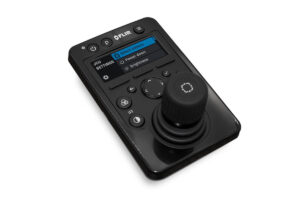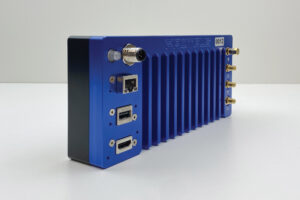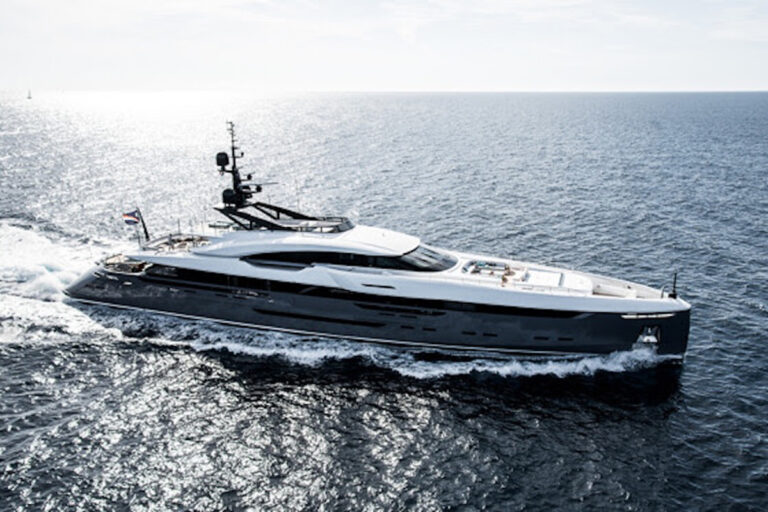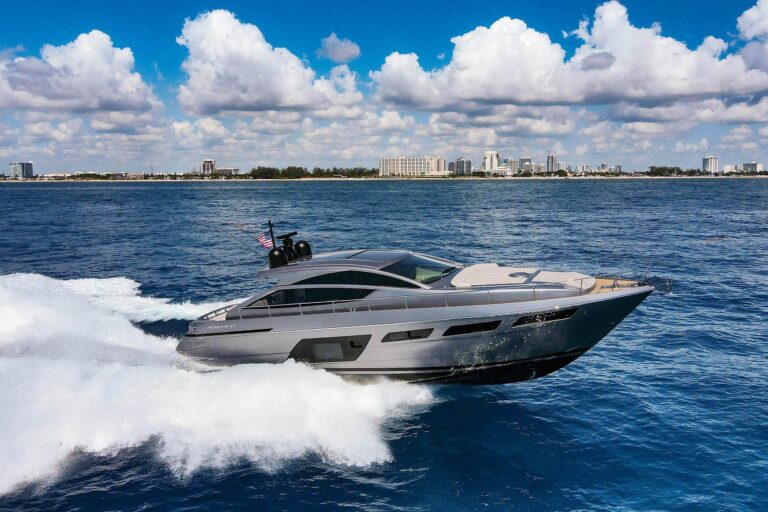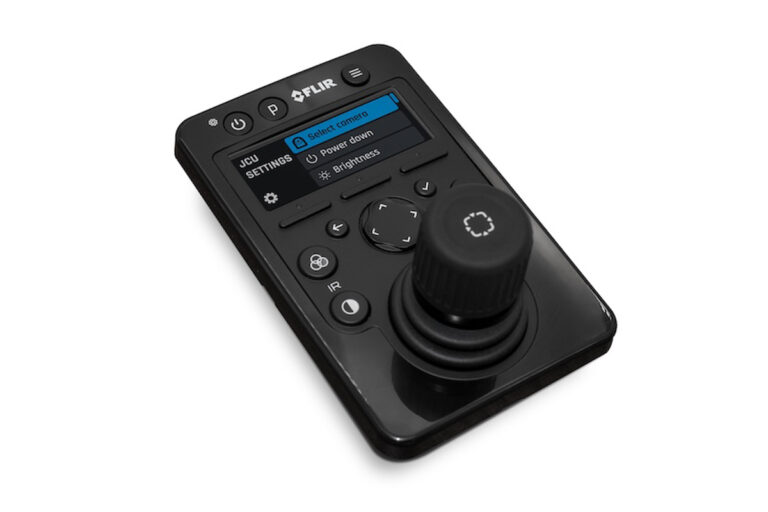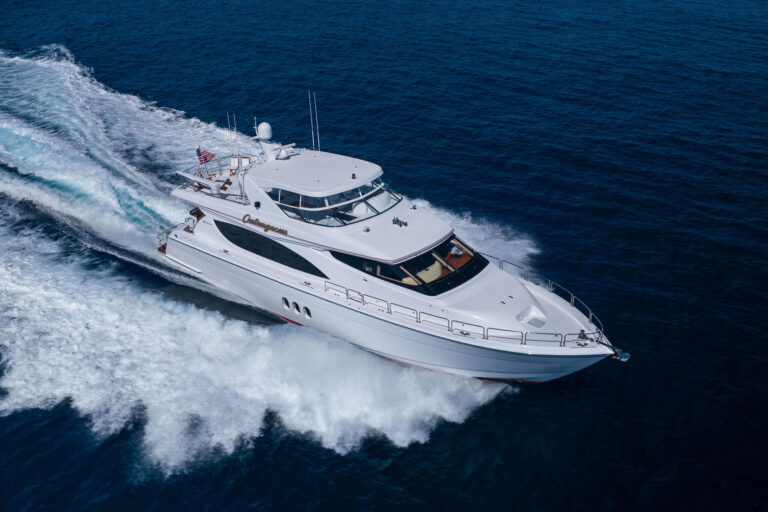
In 2011, Yachting sent me on a 72-hour sprint cruise north from Seattle aboard a 550 hp Protector Hauraki 40. We made it as far north as Vancouver Island’s Telegraph Cove and as far east as the Teakerne Arm of British Columbia’s fabled Desolation Sound, but my 40-plus-knot-club giddiness was curbed by the fact that my wife and I were closing on a house in Seattle. I couldn’t access the Internet with my laptop to send or receive financial documents. We (read: my wife) closed the deal, but the experience emphasized that, while cruising offers an essential escape hatch, online access can be mission critical. Fortunately, today’s connectivity options make it easier to maintain Internet access during near-coastal cruises, particularly through onboard hotspots. Going back a few years, some of the most important innovations in multifunction-display technology have been embedded Wi-Fi cards and dedicated Wi-Fi devices (i.e., GoFree’s WIFI-1 module) that connect to the Internet, provided that Wi-Fi signals exist. This scheme works well in marinas, but troubles arise when vessels leave these Wi-Fi bubbles. Satellite-communication systems provide global coverage, but they are more costly than cellular networks.
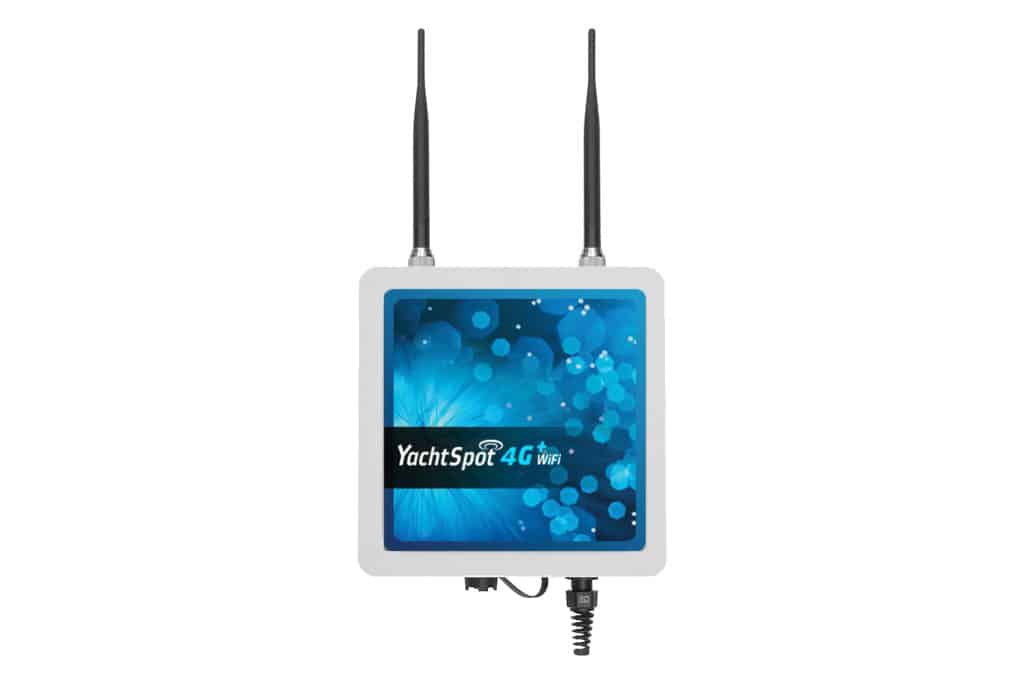
Most contemporary smartphones and cellular-enabled tablets can serve as hotspots. They can share their cellular connectivity with networked computers, multifunction devices and more via a Wi-Fi connection (data usage goes against your device’s monthly plan). Alternatively, third-party USB or wireless hotspot devices (e.g., MiFi devices) can provide cellular connectivity.
Here it’s important to note that service availability is limited to a provider’s coverage map and network speeds. So while cellular service providers offer package deals, it’s wise to carry a hotspot-enabled smartphone and a hotspot device that use different wireless carriers (e.g., an AT&T iPhone and a Verizon Jetpack MiFi device) to ensure comprehensive coverage.
And while cellular hotspots offer reasonably quick speeds (Verizon has published 4G LTE network upload speeds of 2 to 5 megabits per second and download speeds of 5 to 12 Mbps), marine-specific hotspot equipment, such as Inventica Technologies’ line of YachtSpot devices, offers faster speeds and the ability to access the Internet using a variety of technologies, depending on what signals and supporting hardware are available.
YachtSpot units have been in Europe for years, but they just recently received Federal Communications Commission approval and a U.S. distributor (Eurotask). While other marine-focused cellular-connectivity solutions are afloat, including offerings from Digital Yacht, Shakespeare Marine, The Wirie and YachtSurfer, the YachtSpot products are the only marine-specific Wi-Fi devices providing a built-in virtual private network client, which protects websurfing sessions, even on sensitive financial sites.
Inventica Technologies produces three models. The YachtSpot WiFi ($1,800) has a Wi-Fi-only antenna, while the YachtSpot 4G+ WiFi ($3,400) accesses the Internet via cellular and Wi-Fi networks. The YachtSpot Pro ($3,900) accesses Wi-Fi and cellular networks, and it merges sat-comms and fixed-line connections. All three models rely on Inventica Technologies’ proprietary
Internet Control Center, a graphical user interface that allows YachtSpot users to manage online connectivity.
“You can connect your whole onboard network,” says John Stubbings, Inventica Technologies’ product designer and founder. “You pay for only one connection, and all devices are routed through a single YachtSpot.” Hardware-wise, YachtSpot units come with 802.11 abgn Wi-Fi cards, and the YachtSpot 4G+ WiFi and YachtSpot Pro models also come bundled with LTE-Ultra and HSPA+ data cards, providing peak cellular-network upload speeds of 50 Mbps and peak download speeds of 100 Mbps. Stubbings says realistic real-world speeds are 10 Mbps for uploads and 20 Mbps for downloads. YachtSpot 4G+ WiFi and YachtSpot Pro owners can use any Internet service provider’s SIM cards, and all three units draw power over their Ethernet cables. Holding it all together is a die-cast aluminum black-box case with bulkhead fittings and an IP67 weatherproof rating.
Software-wise, all three units include a proprietary DNS Blaster that improves Internet browsing times on cellular or Wi-Fi connections by simultaneously querying multiple DNS servers and selecting the one with the fastest response time. Additionally, Inventica Technologies’ Safe Surf VPN encrypts all Wi-Fi data and channels it to the company’s end servers, providing significantly more online security than a typical open and unencrypted marina Wi-Fi network (cellular networks are carrier-encrypted).
“Marinas are a good place [for hackers] to set up a sniffing honey pot for wealthy and powerful people,” Stubbings says. “Our Safe Surf VPN isn’t sniffable.”
As with all ship-to-shore communications, range is an important consideration. “There’s no absolute answer,” Stubbings says, adding that range largely depends on the cellular network’s base station, which controls the cell’s size and output power levels, and dictates the output power of each mobile device’s 4G card. Here, a properly installed antenna can make a big difference.
Stubbings recommends marine-class antennas mounted about 20 to 35 feet above the brine, but he advises against using signal-boosting equipment (see “Free Communications”) with YachtSpot equipment. “Amplification of [a] signal isn’t the same as [a network] increasing the power output of their signal to increase range,” Stubbings says. “Amplification of a low signal will normally be degraded.”
YachtSpot says its equipment should function solidly with cellular or Wi-Fi service. “Bandwidth is generally not a problem,” Stubbings says, adding that he uses YachtSpot to stream Netflix onto his smartphone. He does caution that Skype’s video conferencing can sometimes be choppy (voice-only calls are reportedly unaffected).
Given the modern demand for constant connectivity, marine-specific hotspot equipment can help coastal cruisers stay in touch with their online lives at significantly less expense than sat-comms systems do. And as for closing on a house and trying to stay married while off cruising, make sure that you plan accordingly — especially if your itinerary involves places more remote than Desolation Sound.
FREE COMMUNICATIONS
While Inventica Technologies doesn’t recommend using signal-amplification equipment with its YachtSpot systems, many boaters enjoy free Wi-Fi access courtesy of signal boosters that let them connect to shoreside networks. This typically requires an omnidirectional antenna, a radio-frequency (RF) cable, an RF receiver and an onboard router, plus software/firmware that allows for setup and control via a web-browser interface. Long-range Wi-Fi equipment works up to 10 miles away, but Wi-Fi — like VHF — has shorter ranges (say, 1 to 5 miles). Similar signal-amplification equipment is also available for cellular signals, which is another important consideration.

